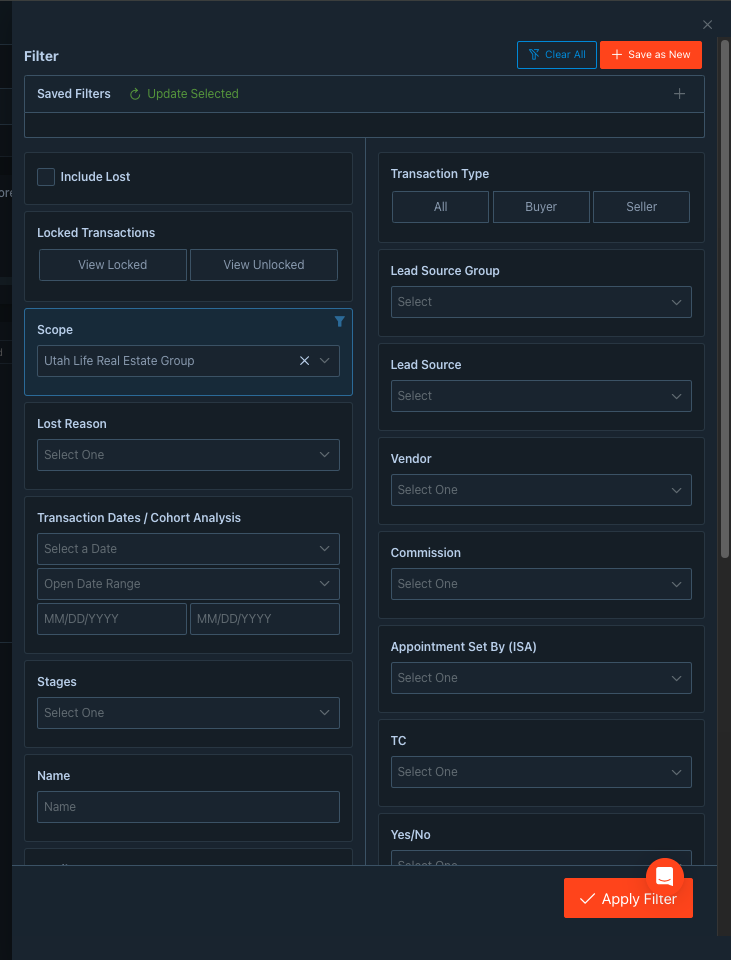(Sisu user? Want to skip to the product updates? Click here).
---
I've been able to spend a lot of time with Big Money over my career. Big banks, hedge funds, growth equity funds, venture capital, you name it.
These are some of the most data-driven people on the planet. You have to be, when you're making 8 figure bets on complex systems.
And one thing I've started to notice is that a lot of them are obsessed with a certain method of looking at a business. It's called Cohort Analysis. It's a pretty common term in the finance world. Most people in the real estate world give me blank stares when I bring it up. Which is why we've baked it into Sisu—because if you can master it, you'll be running your business at an elite level that your competition can't touch.
What is Cohort Analysis and how does it help manage real estate leads?
A cohort is just a group.
Maybe it's a group of leads.
You had 150 Pay-Per-Click leads come in to your business last month. Where are those at now? What % of them convert to appointments set? Appointments held? Signed? Under Contract? Closed?
Maybe it's a group of deals/transactions.
You had 27 ISA set appointments last month. How many of those were held? How well did the agents convert from there? Are you seeing revenue, or at least forecasted revenue from them?
Maybe it's a group of new agents.
How many did you talk to? How many of those conversations turned into appointments? How many went on a recruiting appointment with you?
When you look that closely at your business, you start to see all kinds of trends. You see where business is dropping off. It becomes clear where you can focus to make a difference.
New Updates in Sisu make Cohort Analysis effortless
We just launched some brand new updates in Sisu NEXT around Cohort analysis.
By the way—if you haven't seen Sisu NEXT, you haven't seen Sisu at all. It's our brand new interface. It is improved in every single way. It's faster, it's 100% mobile compatible, and it's where we're launching some really epic stuff. Like this Cohort Analysis. Or our new CEO dashboard.
Here's a video from our team showing the brand new Cohort Analysis updates and features that are available for you in Sisu NEXT right now.
How we're delivering Cohort Analysis in the product
The biggest change being made here is that there's a new dashboard (you'll see it in Sisu NEXT, click on "Circle Dashboard (BETA)")

This new version of the classic Sisu Circle Dashboard has a brand new filter drawer added up here:

Which opens up like this:

There are tons of possibilities on how you can use this filter drawer on the Circle Dashboard. One of the biggest changes happens when you change up the transaction dates. Normally, the Sisu dashboard works like this:
- Set a date range, for example March 1 - March 31
- Appointment set shows you all appts set March 1 - March 31
- Appointment met shows you all appts met March 1 - March 31
- Signed shows you signed, under contract shows you under contract, closed shows you closed, etc.
This does a really good job of showing you "What happened over x date range?".
When you use the filter drawer above and add a Transaction Date / Cohort Analysis filter, the whole dashboard changes to only show transactions that match that transaction date.
So if you select Appointments Set and a date range of Last Month, you'll only see transactions where the appointment was set in that date range. And you'll be able to see exactly what happened with that Cohort of transactions.
There's quite a bit more you could do. You could filter down by lead source. You could also filter down by appointments set by your ISA. You could do a "Luxury" filter to see what conversion looks like on $1,000,000 transactions. There's a lot of possibilities.
This should be effortless
You shouldn't need to have extra processes to create this type of reporting, or team members exerting themselves on Sunday's so that your numbers can be ready for Monday team meeting.
The flow of data through your business should just produce this type of data on autopilot.
The team here at Sisu is experts on that. We'll connect your CRM, show you how data flows through the system, and you'll have a fully-loaded Sisu process ready to go before you even have to pay us a dime.
---
(next post I'll be writing about our brand new CEO dashboard. Want to get the updates before everyone else? Subscribe 👇)





%20(1024%20x%20512%20px).png)


.png)


